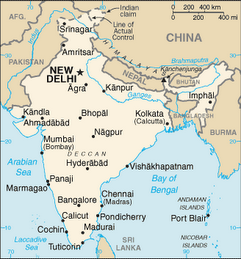
The New York Times, on June 9, covered the duality of life that exists in Gurgaon in far more eloquent prose than me, though it failed to address the relationships that exist between residents and staff. Though we have six members of our own house staff cooking, cleaning, and managing various activities, we also watch cricket with them, practice Hindi, and learn about their homes and lives. They make chai; we make conversation. But the NYT article highlights the divided world of gated apartment and slum-life that's increasingly visible in Indian metropolises. In cities like Bangalore, Hyderabad, Bombay, and Delhi NCR (Noida and Gurgaon) where the educated 0.7 percent of the 1.1 Billion people work predominately in outsourced IT jobs (Source: Edward Luce) bifurcated communities are certainly evident.
Cycle rickshaws still patrol the streets, curbsides are crumbled and littered with the tents of road-side slums. The vibrant colors of residents ornament the dusty scene as usually seen through tinted windows of honking vehicles. In Gurgaon I find smiles are common, though most of my co-workers complain of local crime. I realize that my reception as a foreigner on the street is perhaps different, my involvement in street life is usually novel, and novelty inspires smiles in otherwise sad and desperate lives. Those with whom some interact when leap-frogging between the shopping malls that moonlight as oases, are not bad, but they are desperately poor. Some cite visiting malls as the only activity in Gurgaon. As Rory Stewart would agree, it's only The Places In Between that matter. The ubiquity of the desperately poor does not impact the extent to which luxury in India is available and growing; however, the fact that Mercedes and Burberry exist does not mask the truth that India has egregious resource allocation issues with consequences of the highest magnitude.



No comments:
Post a Comment